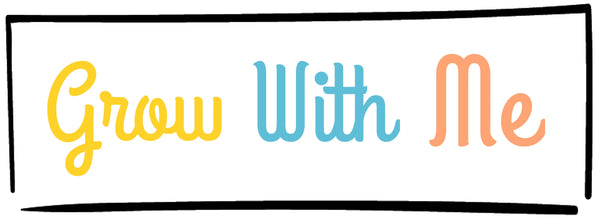
Best Educational Toys for 1 Year Olds
Share
When you're looking for the best educational toys for a 1-year-old, think about what they're busy learning right now. Things like stacking rings, shape sorters, and sturdy push walkers are perfect. They aren't just for fun; they're tools that directly support the huge skills your little one is working so hard to master, from finessing their grip to taking those first wobbly steps.
The World Through Your One-Year-Old’s Eyes
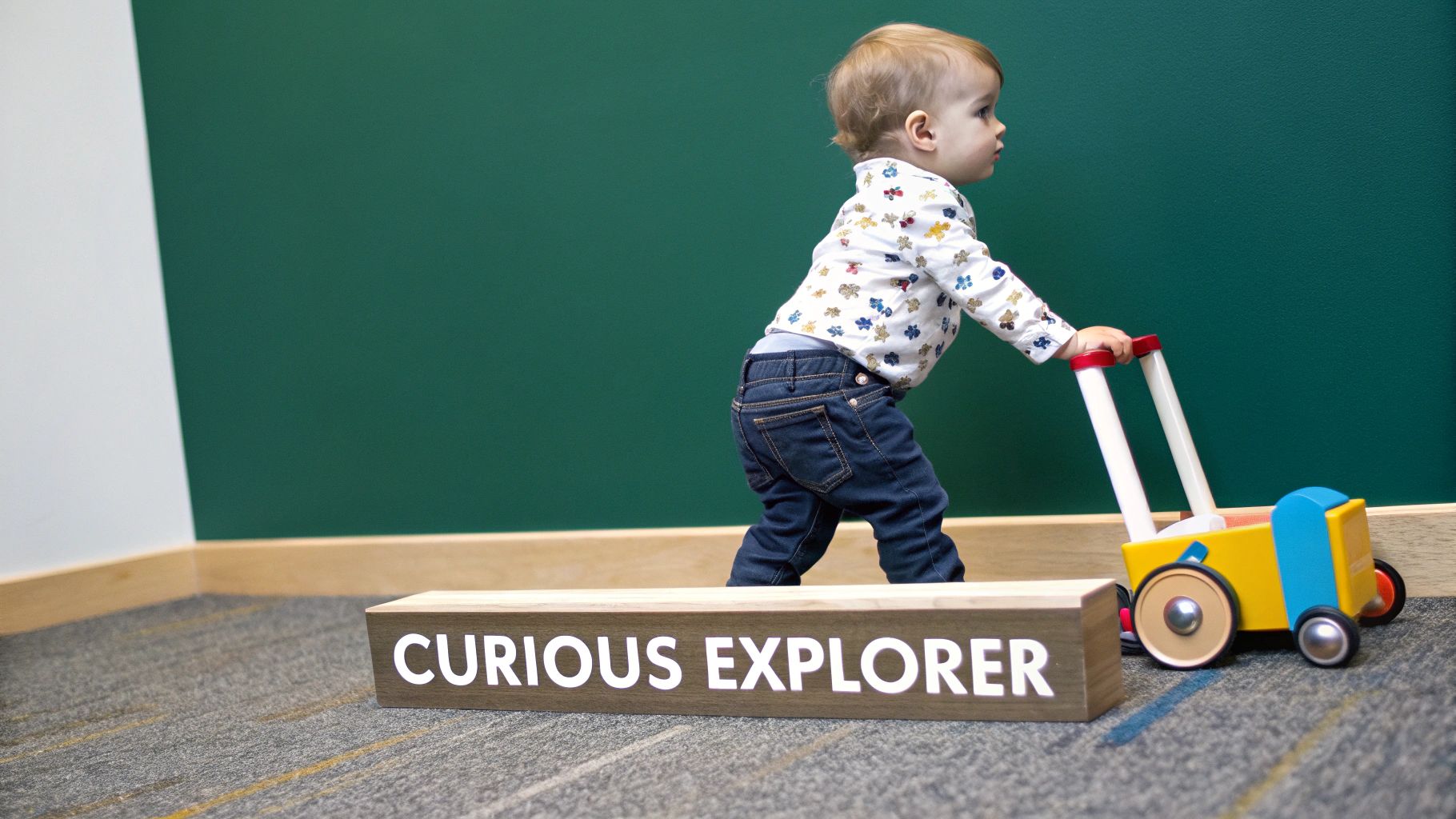
At one year old, your child has officially graduated from being a passive baby to a tiny, curious scientist. Every moment is an experiment, and their playtime is serious business. If you want to pick toys that will truly engage them, you first need to understand where they are developmentally. Their world is a complete whirlwind of new physical skills and brainy breakthroughs.
Ever notice how they love to drop a spoon from their high chair over and over again? It’s not just them being cheeky; it’s one of their first lessons in cause and effect. They're figuring out, "When I do this, that happens." This is the absolute bedrock of problem-solving. Toys that give an immediate reaction, like a ball that jingles when it rolls, really cement this vital connection in their minds.
Mastering Movement and Motor Skills
Physically, your one-year-old is on a mission. They're getting the hang of pulling themselves up, cruising along the sofa, and maybe even taking those first incredible solo steps. This isn't just about moving from A to B; it's a massive period of development for their balance, coordination, and sense of where their body is in space.
A simple push walker, for instance, is so much more than a walking aid. It’s a brilliant tool that offers just enough stability to build their confidence and strengthen their leg muscles. And once they’re mobile? It opens up a whole new perspective on their world, sparking their curiosity to explore even further.
At the same time, their fine motor skills are getting a major upgrade. That clumsy whole-hand grab is slowly transforming into a more precise pincer grasp, which lets them pick up smaller objects between their thumb and forefinger.
Play is often talked about as if it were a relief from serious learning. But for children, play is serious learning. Play is really the work of childhood. - Fred Rogers
This is exactly why toys with pieces they can grasp, twist, and manipulate are so important right now. Great activities for boosting this dexterity include:
- Stacking rings: Brilliant for teaching hand-eye coordination and the basic concept of size.
- Simple puzzles with large knobs: These help them practise picking up and placing objects with real intention.
- Soft blocks: Building them up and knocking them down is a fantastic game that teaches construction and, well, gravity!
Cognitive and Sensory Exploration
A one-year-old’s brain is firing on all cylinders, trying to make sense of everything it sees, hears, and touches. They're just starting to grasp object permanence—the idea that something still exists even when they can't see it. This is precisely why a game of peek-a-boo or toys with little flaps to lift are endlessly captivating for them.
Choosing the best educational toys for a 1-year-old is all about seeing the world from their level. It’s about giving them the right tools that match their natural drive to discover, move, and understand. Every toy becomes a little partner in their scientific journey, turning simple playtime into a powerful engine for growth.
Your Guide to Safe and Engaging Toddler Toys
When it comes to choosing the best educational toys for a one-year-old, safety isn't just a feature—it's everything. At this age, toddlers are wired to explore the world with their hands and, quite often, their mouths. Think of yourself as a toy detective, spotting potential hazards before they ever become an issue.
First things first, look for official safety certifications. In the UK, that means keeping an eye out for the UKCA (UK Conformity Assessed) mark or the CE mark. These aren't just decorative stickers; they're your guarantee that the toy has passed rigorous testing to meet strict safety standards, from its chemical makeup to its physical strength.
Next, it's time for a hands-on inspection. A toy might look perfectly harmless on the shelf, but you need to check it for hidden risks. Pay close attention to small parts, any sharp edges, and how well it's put together.
Conducting a Quick Toy Safety Check
Before you buy a toy—and every so often once it's home—run through this quick mental checklist. It only takes a moment.
- The Small Parts Test: A good rule of thumb is the film canister test. Can any part of the toy fit inside one? If it can, it's a potential choking hazard. Look out for things like loose button eyes on a teddy bear or wheels that could pop off a toy car.
- Material Integrity: Always opt for non-toxic, BPA-free plastics and lead-free paints. Since almost everything ends up in a one-year-old's mouth, this part is absolutely non-negotiable.
- Durability and Edges: Give the toy a firm squeeze and a gentle pull. Does it feel solid? It needs to be tough enough to survive being dropped, chewed on, and thrown. Run your hand over every surface to feel for sharp points or splinters.
This checklist helps you see the different layers of toy safety at a glance.
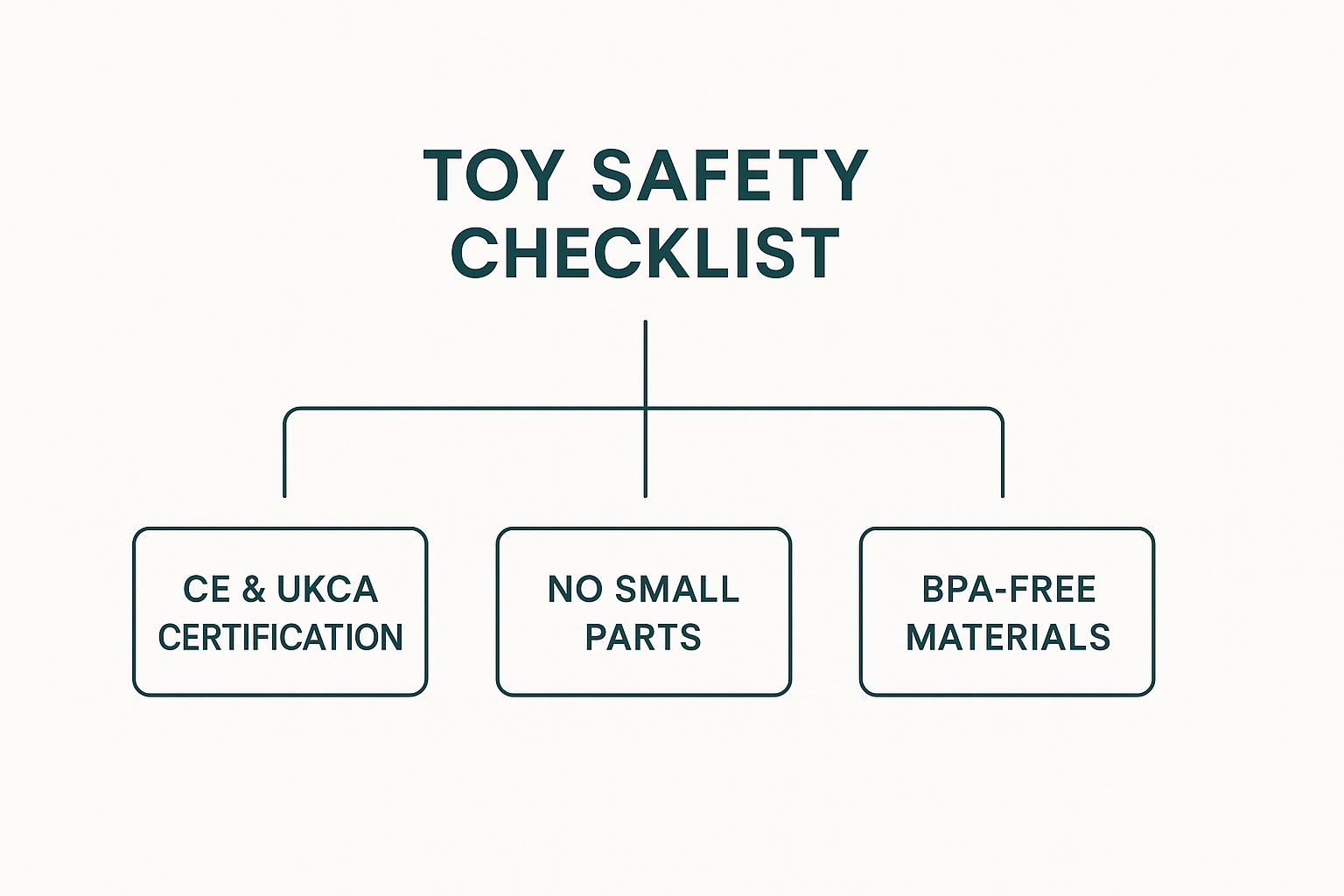
As the infographic shows, true safety is a combination of official certification, smart physical design, and the right materials.
What 'Developmentally Appropriate' Really Means
Beyond just physical safety, the best toys are "developmentally appropriate." All this really means is that a toy matches your child’s current skills and stage of development. If it's too advanced, they'll get frustrated; too simple, and they'll get bored.
The goal is to find a toy that offers a 'just right' challenge. Think of it like a puzzle that’s tricky enough to be engaging but not so hard that your toddler gives up.
That sweet spot is where the real learning happens. A classic shape sorter, for example, is perfect for a one-year-old. It challenges their emerging problem-solving skills and helps them practise fine motor control.
You can also look beyond traditional toys. Introducing safe and washable art supplies for toddlers is a fantastic way to encourage creative exploration. When you pick toys that are both safe and suitably challenging, playtime becomes a fun, confidence-boosting experience that makes them eager to learn more.
Unpacking the Best Educational Toy Categories
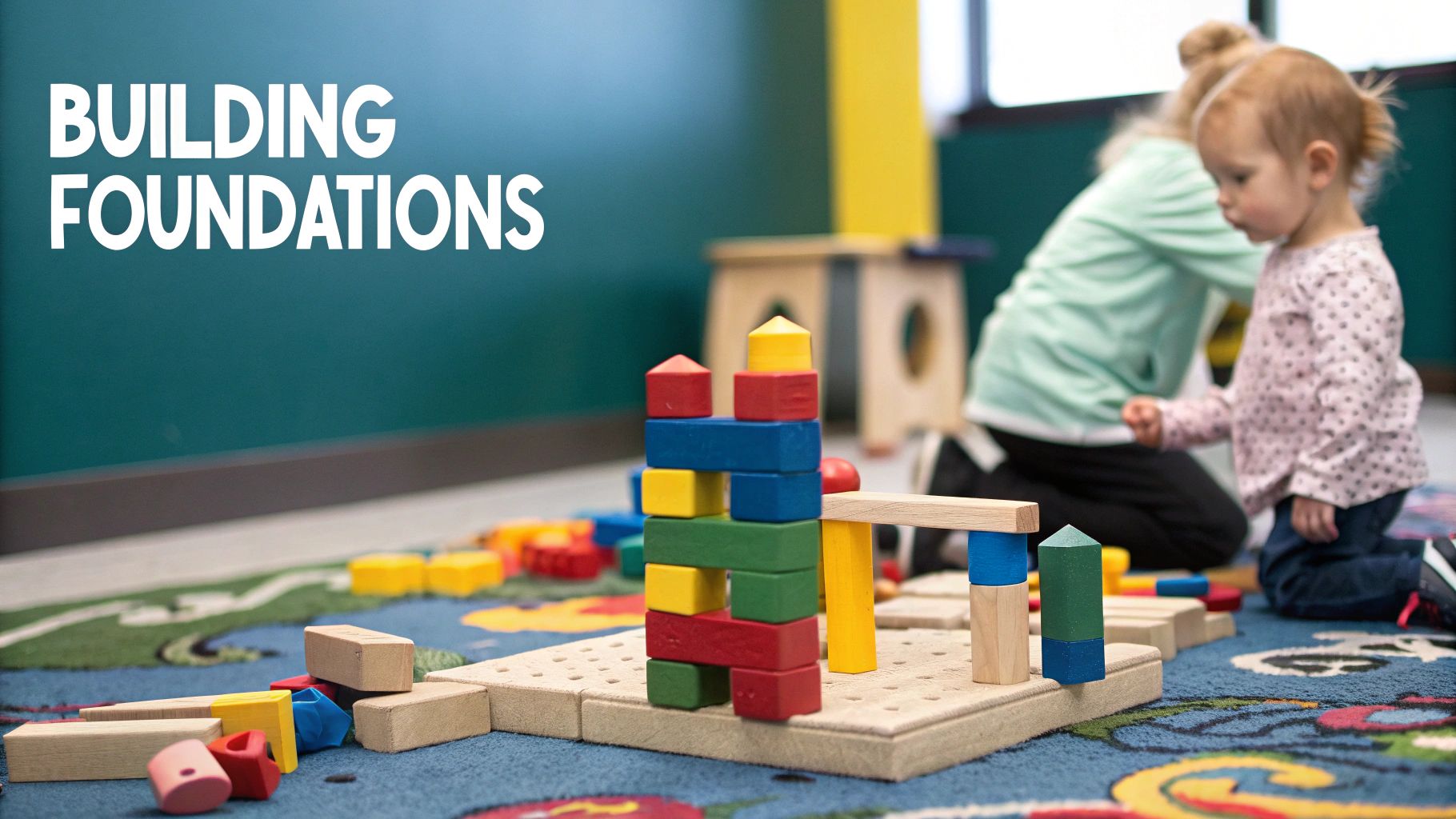
When we talk about the best educational toys for a one-year-old, we're looking at more than just a fun object. We're looking at the developmental magic that toy unlocks. Each category of toy is designed to target specific skills that are absolutely exploding during this incredible stage of growth.
Think of it like a developmental gym. One area is for building fine motor strength, another for boosting problem-solving, and a third for improving balance and coordination. Offering your little one a variety means they get a fantastic, well-rounded workout for their rapidly growing brain and body.
Toys For Building and Creating
Building blocks are the classic educational toy for a very good reason. When your one-year-old stacks a few blocks before they all come tumbling down, it's not just a game—it's a mini-physics experiment! They’re getting a hands-on lesson in gravity, balance, and cause and effect.
This single category is a true powerhouse for developing essential skills:
- Fine Motor Control: The simple act of grasping and placing a block refines their pincer grasp.
- Hand-Eye Coordination: Getting one block to sit perfectly on another is a big task that builds this connection.
- Spatial Awareness: They start to grasp concepts like 'on top', 'under', and 'next to'.
There’s a reason these toys are so popular. Building and construction sets were the most popular category in the UK educational toys market, accounting for 21.26% of its revenue in 2023. It just goes to show how much parents value these foundational play experiences.
Puzzles and Problem-Solvers
Toys that challenge a one-year-old to figure something out are brilliant for their cognitive development. Shape sorters are a perfect first puzzle. They present a clear problem that needs solving: this square peg will not fit in that round hole.
Through lots of trial and error, your child learns to recognise shapes, match them, and twist them until they get it right. This process builds resilience and lays the groundwork for logical thinking. Simple puzzles with big, chunky knobs also fit in here, encouraging them to turn and manoeuvre pieces to find the perfect spot.
These toys teach a vital lesson: if you keep trying and thinking, you can solve the problem. This builds a foundation of confidence and curiosity that will serve them for life.
Movers and Shakers: Gross Motor Toys
As your one-year-old gets more mobile, toys that encourage them to move are absolutely essential. Push walkers, pull-along toys, and little ride-on toys are all fantastic for developing gross motor skills. They help to strengthen leg muscles, improve balance, and build the confidence needed for walking.
A simple push toy can give a cruising toddler just enough stability to take those wobbly first steps. In the same way, a pull-along duck that wobbles along behind them turns movement into a delightful game, encouraging them to walk, turn, and navigate their space.
Sensory and Language Sparkers
At this age, learning happens through all the senses. Toys with interesting textures, sounds, and colours are brilliant for stimulating their senses and building crucial neural pathways. Think of sensory balls with different bumps and ridges or soft fabric books with crinkly pages—they all provide rich tactile feedback.
Board books are especially powerful. Cuddling up and reading together introduces new words and sounds, paving the way for language development. When you point to pictures and name the objects, you're helping them connect words to the world around them. For more ideas, you might be interested in our guide on the benefits of sensory toys for babies.
This category proves that often the simplest toys provide the richest learning opportunities, turning playtime into a true journey of discovery.
To help you see how it all fits together, here's a quick look at how different toys support your little one's development.
How Different Toys Support Your Toddler's Growth
| Toy Category | Primary Developmental Skill | Example Activities |
|---|---|---|
| Building & Creating | Fine Motor & Spatial Skills | Stacking blocks, nesting cups, putting rings on a post. |
| Puzzles & Problem-Solvers | Cognitive Development | Using a shape sorter, completing a simple knob puzzle. |
| Movers & Shakers | Gross Motor Skills | Pushing a walker, pulling a toy, using a ride-on car. |
| Sensory & Language | Sensory & Language Skills | Exploring textured balls, reading board books together. |
As you can see, each type of toy plays a unique and important role. By offering a mix, you give your child a wonderfully balanced "play diet" that nourishes their mind and body.
Choosing Toys That Grow With Your Child
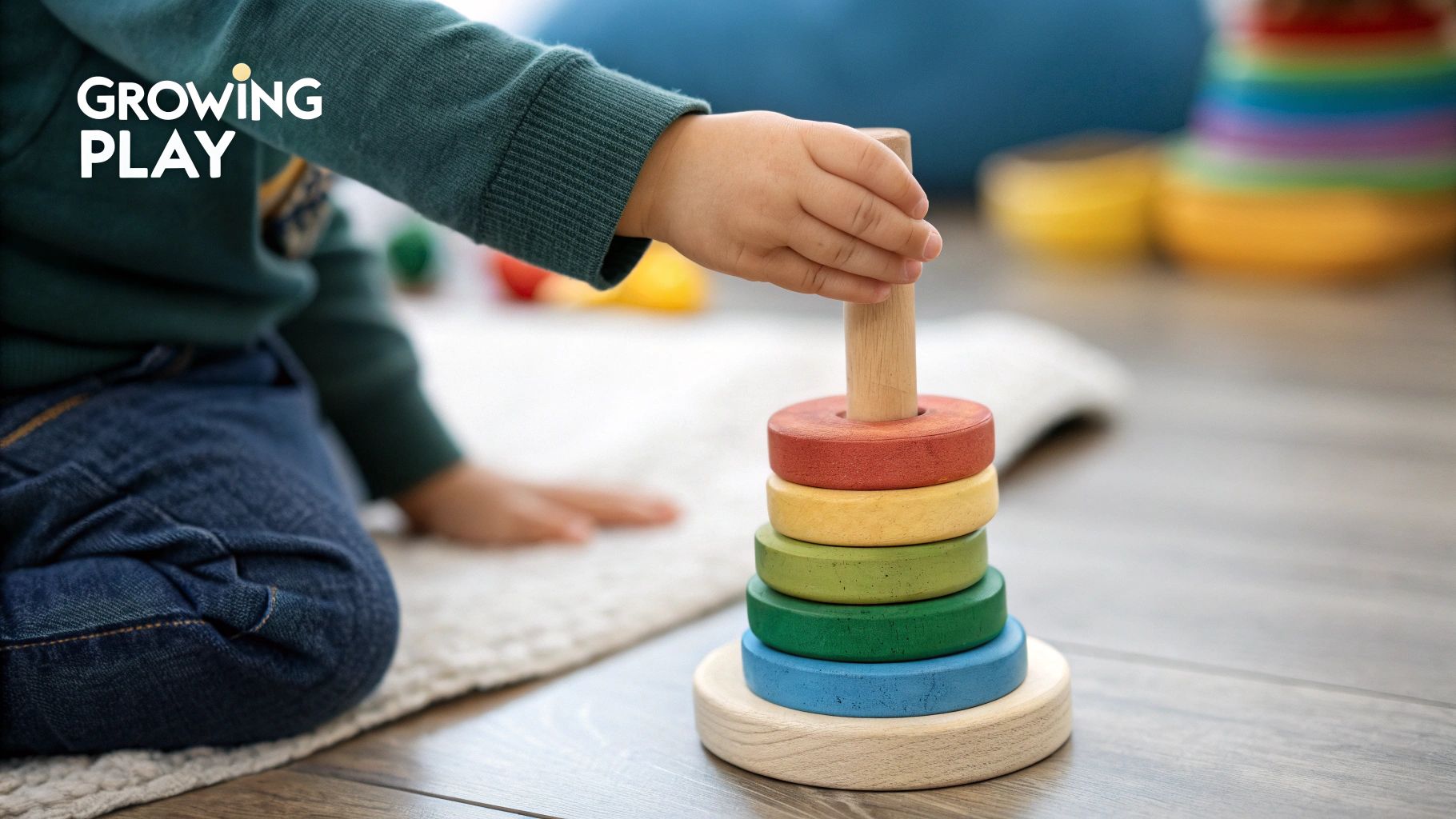
It’s a familiar story for many parents: you buy an exciting new toy, only to find it cast aside and forgotten within weeks. The secret to avoiding a pile of neglected plastic is to choose toys with real long-term play value—things that can adapt and evolve right alongside your child's imagination.
Think about a classic set of stacking rings. At one year old, the challenge is simply pulling the rings off the post and exploring their shape and texture. A few months on, they'll start mastering how to put them back on, a huge win for their hand-eye coordination. Fast forward to age two, and those same rings become a fantastic tool for learning colours and counting. It’s one toy, but it unlocks multiple stages of learning.
Investing in versatile toys like these doesn't just save you money. It gives your child a familiar, comforting object they can return to again and again, discovering new ways to play as they grow.
The Value of Open-Ended Play
Often, the best educational toys for a one-year-old are the simplest. We’re talking about open-ended toys—the ones that don’t have a single, fixed purpose. A set of plain wooden blocks, for example, can be anything your little one can dream up.
Today, they might be a wobbly tower just waiting to be knocked down. Tomorrow, they could be a fence for farm animals or a road for little cars. This is where the magic happens. This kind of play is absolutely vital for nurturing creativity, problem-solving skills, and the confidence to think for themselves.
Open-ended toys are like a blank canvas for a child's imagination. Instead of telling a child how to play, they invite the child to decide what the play will be, fostering creativity and cognitive flexibility.
These are sustainable choices in every sense of the word. When looking for presents, it’s always a great idea to seek out practical gifts that grow with your child, as they are built on this very same principle of lasting usefulness.
Identifying Toys With Staying Power
So, how do you spot a toy that will go the distance? The trick is to look for items that can be used in lots of different ways and support various stages of development.
Here’s what to keep an eye out for:
- Multi-Stage Functionality: Can the toy be used for simple motor skills now and more complex ideas later? Stacking cups, shape sorters, and chunky puzzles are perfect examples.
- Encourages Imagination: Does it spark pretend play? Things like simple animal figures, toy vehicles, and play food can be used in endless imaginative games for years to come.
- Durable and Timeless: High-quality wooden toys often tick this box perfectly. Their sturdy build and classic appeal mean they can withstand years of enthusiastic play.
Many of these ideas are at the heart of the Montessori approach, which champions simple, natural toys that encourage children to explore and learn on their own terms. If you're curious, you can learn more in our guide to Montessori toys for toddlers. By choosing thoughtfully, you can build a toy collection that truly supports and nurtures your child’s development for years to come.
Why UK Parents Are Embracing Educational Play
The growing hunt for the best educational toys for a one-year-old isn't just a passing fad. It’s a genuine shift in how parents across the UK see those crucial first years. We've moved past thinking of play as just a way to keep little ones busy; we now understand it's the most important work of early childhood.
This change comes from a much deeper, more widespread appreciation of just how fast a baby's brain develops. Parents are more clued-up than ever that the window from birth to three is a period of explosive neurological growth. Choosing toys with a clear purpose—whether it's teaching cause and effect, refining motor skills, or just sparking curiosity—is a direct response to that knowledge.
A Nationwide Shift Towards Purposeful Play
Modern parents are actively looking for ways to give their children the best possible start. This even includes introducing concepts related to STEM (Science, Technology, Engineering, and Maths) right from the beginning. Think about it: a simple set of building blocks is a child's very first lesson in basic engineering and physics.
This desire to support early learning is having a real impact. In fact, the UK toys market is projected to grow at a compound annual rate of 4.55% between 2025 and 2035. This steady climb is fuelled by parents choosing to invest in high-quality, developmental toys. You can discover more insights about the UK toy market on Spherical Insights.
The way we shop has also played a big part. The boom in online retail has made it so much easier for parents everywhere in the UK to find specialised, high-quality educational toys that you might not see on your local high street.
Choosing an educational toy is about more than just entertainment. It's an intentional decision to provide a tool that supports your child's cognitive, physical, and emotional development at a critical stage.
Making Developmental Play Accessible
The sheer convenience of online shopping and curated services has empowered parents to make much more informed choices. Instead of being stuck with whatever's on the shelf, families can now research and find toys that are a perfect match for their child's specific developmental stage.
This is why services built around this idea are becoming so popular. They take the guesswork out of the equation, delivering hand-picked, age-appropriate items straight to your door. For busy families, that accessibility is a game-changer. If you're after a convenient way to get stage-based toys, you can learn more about finding the right toddler subscription box in the UK.
Ultimately, this move towards educational play is a really positive, nationwide movement. It’s a collective realisation that by giving our children the right tools for discovery, we're helping to nurture the potential of the next generation, one playful moment at a time.
Your Top Toy Questions Answered
Diving into the world of educational toys for your one-year-old can feel a bit like a maze. You want to get it just right, finding that perfect balance between fun and development, but it’s natural to have questions.
We’ve pulled together the most common queries we hear from parents to give you clear, confident answers. This will help you create a play space that enriches their world without overwhelming it.
How Many Toys Does a One-Year-Old Really Need?
It’s easy to fall into the trap of thinking more toys mean more learning, but it’s usually the other way around. A huge pile of toys can be overwhelming for a toddler, making it tough for them to focus on anything for more than a few moments.
For a one-year-old, less is definitely more. A small, carefully chosen collection of around 8-10 high-quality, versatile toys at any one time is ideal. This encourages your little one to engage more deeply and explore what each toy can really do, rather than flitting from one thing to the next.
Quality over quantity is the golden rule. A handful of well-chosen, open-ended toys will spark far more creativity and focused play than a room full of flashy, single-use gadgets.
Plus, this minimalist approach makes tidying up a whole lot less daunting for everyone!
Wooden Toys Versus Plastic Toys: Which is Better?
Ah, the classic debate! Honestly, both wooden and plastic toys have their place, and the "best" choice really depends on what you value and how your child likes to play.
Wooden toys get a lot of love for being incredibly durable, having a timeless feel, and offering a lovely connection to nature. They’re often simpler in design, which is fantastic for sparking imagination. On the other hand, good-quality, BPA-free plastic toys can bring vibrant colours, interesting textures, and interactive features that many children find completely captivating.
Here’s a quick rundown:
- Wooden Toys: Exceptionally durable, sustainable, and brilliant for open-ended, imaginative play. They offer a simple, tactile experience.
- Plastic Toys: Often lighter on the wallet and can feature lights, sounds, and complex parts that are great for teaching cause-and-effect.
In the end, a healthy mix of both is probably the best solution. It gives your child a wonderful variety of textures, sounds, and play experiences to explore.
What Is the Best Way to Rotate Toys?
Toy rotation is a game-changer for keeping playtime fresh and engaging. All it means is putting some toys away for a while and swapping them out every so often. It’s amazing how an old toy can feel brand new again, preventing boredom and overstimulation.
Getting started is simple. Just split your child’s toys into three or four small groups. Put one group in their play area and store the rest out of sight. Then, every week or two, pack up the current set and introduce a new one. It's a simple habit that keeps their space interesting and helps you notice which toys are their genuine favourites.
This focus on purposeful play is a growing movement. The global educational toys market was valued at a huge USD 66.22 billion in 2024 and is set to keep growing, which shows just how much parents are prioritising meaningful play. You can read the full research about the educational toys market on Fortunebusinessinsights.com.
At Grow With Me, we take all the guesswork out of finding the right toys for the right stage. Our curated play kits, filled with beautiful, high-quality items, are delivered straight to your door, perfectly matched to your child’s developmental journey. Discover how our subscription boxes can support your little one's learning today!
